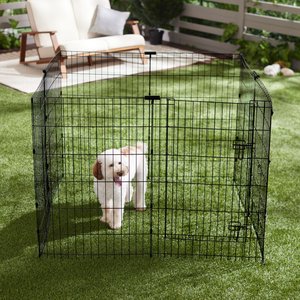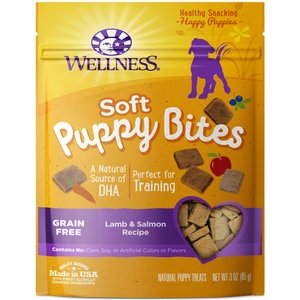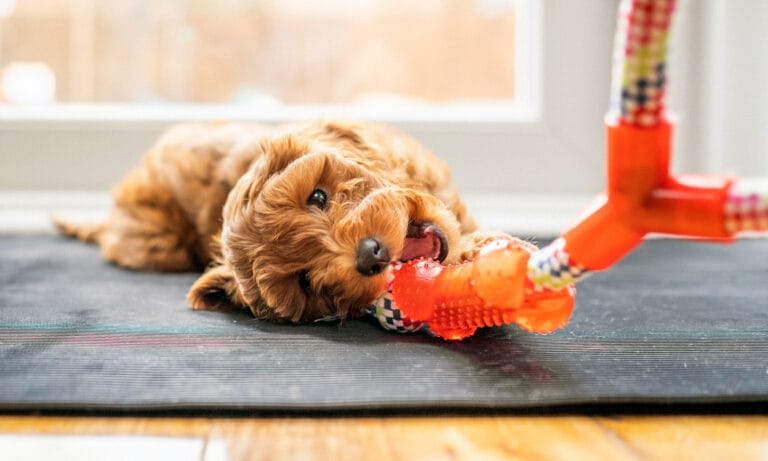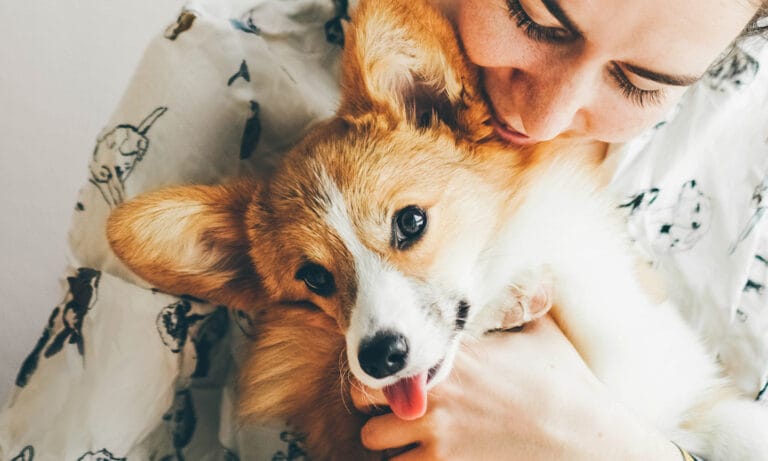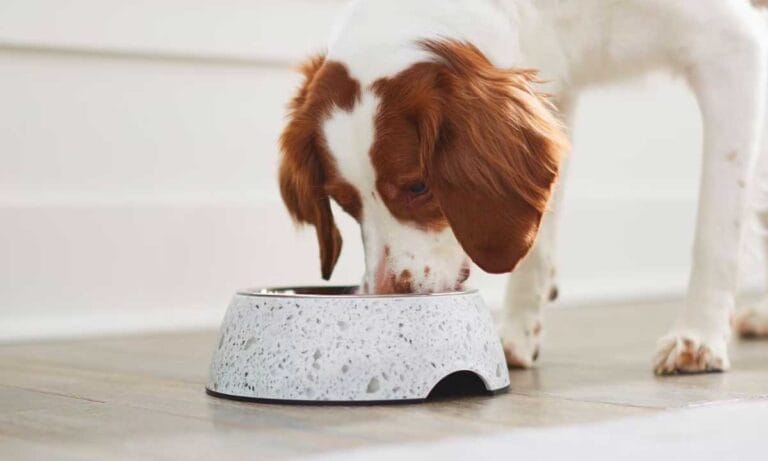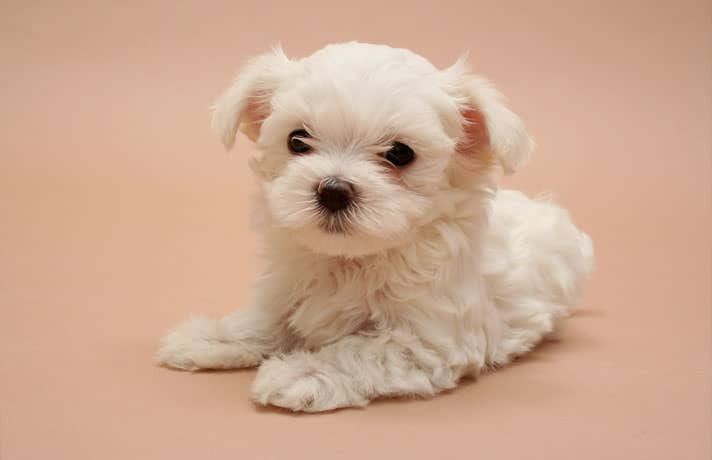Learning how to potty train a puppy is one of the most important tasks you’ll undertake as a new pet parent. But because it can be such an all-consuming process, it can feel like a full-time job all on its own. But, hellooo, you’ve got your ACTUAL full-time job to worry about!
You want to do right by your new best friend, but being out of the house for extended periods of time—or preoccupied for most of the day if you’re working from home—certainly doesn’t make it easy.
Luckily, with a bit of planning and some time management, you can easily learn how to potty train a puppy when you work.
But First, Potty Training Supplies
Your new puppy comes with a long shopping list, which includes potty training supplies. The following items will streamline the process and help you understand how to potty train a puppy so you can start your lives together off on the right paw.
Dog Crate
A properly sized crate is an important training tool, both for potty training and keeping your dog safe when you’re not around to supervise. The crate provides your puppy with a comfortable space that taps into a dog’s natural denning instinct. Since dogs don’t like to soil where they sleep, it’s invaluable during the potty-training process. The crate should be sized so that your puppy can comfortably stand up, turn around and lie down, but not much bigger than that. If the crate is too big, your puppy might be able to use one corner as a bathroom and sleep comfortably in another.
The Frisco Fold & Carry Double Door Collapsible Wire Dog Crate is available in six different sizes, so you can choose the one that’s a perfect fit for your pup.
Pet Gates
Supervision is key during potty training, which is much harder to do when you’re chasing your pup from room to room! Moveable pet gates are perfect for managing your little one’s environment, both from a potty-training perspective as well as when it comes to potential household destruction. (Remember, puppies love to chew, so keep your precious pumps and wedges out of harm’s way.)
Pet gates enable you to shrink your living space so that you can always keep your puppy in sight. One option to consider is the Carlson Pet Products Design Studio Freestanding Extra Pet Gate, which can expand to a convenient 40 to 70 inches.
Exercise Pen
Pet parents who are away from the home longer than their puppy can comfortably hold it—which is basically anyone who works out of the home—need to provide their puppy with a long-term confinement area, complete with a spot where their puppy can use the bathroom. A pen, like the Frisco Wire Dog Exercise Pen With Step-Through Door, that holds your puppy’s new crate and a potty area inside (more on this below!) will enable you to keep your puppy safe and set them up for housetraining success.
Potty Spot
Busy Toys
You know how you wouldn’t be able to survive the long hours in the office without your Spotify playlist? Well, dogs need some entertainment too while you’re toiling away.
Treat-dispensing hard plastic busy toys, such as the West Paw Zogoflex Large Tux Tough Treat Dispensing Dog Chew Toy, can help your dog learn to love their crate. Invest in a variety of options and give them one every time you put them in their crate to keep them busy during potty-training confinement. (Be sure your pup isn’t able to rip apart the toy before leaving them unsupervised with it.)
Treats
A little, yummy reward goes a long way in potty training. Be sure to reward your puppy every time they potty outside with a small, delicious goody, like Wellness Soft Puppy Bites, which are specifically designed for rewarding young dogs. Make sure to take the treats with you when you go for a potty run, so you can reward your pup immediately after they go.
Cleanser
Accidents happen! Stock up on a bottle of enzymatic cleanser, such as Nature's Miracle Dog Enzymatic Stain & Odor Remover, that treats the stain and the odor it leaves behind. Pro tip: Proper clean-up prevents your pup from going back to the area and marking it again.
Now On to How to Potty Train a Puppy When You Work
Yes, even if you have a full-time job or are working long hours at home, you can set your puppy up for potty training success with the following steps that won’t have you sacrificing your employee-of-the-month status.
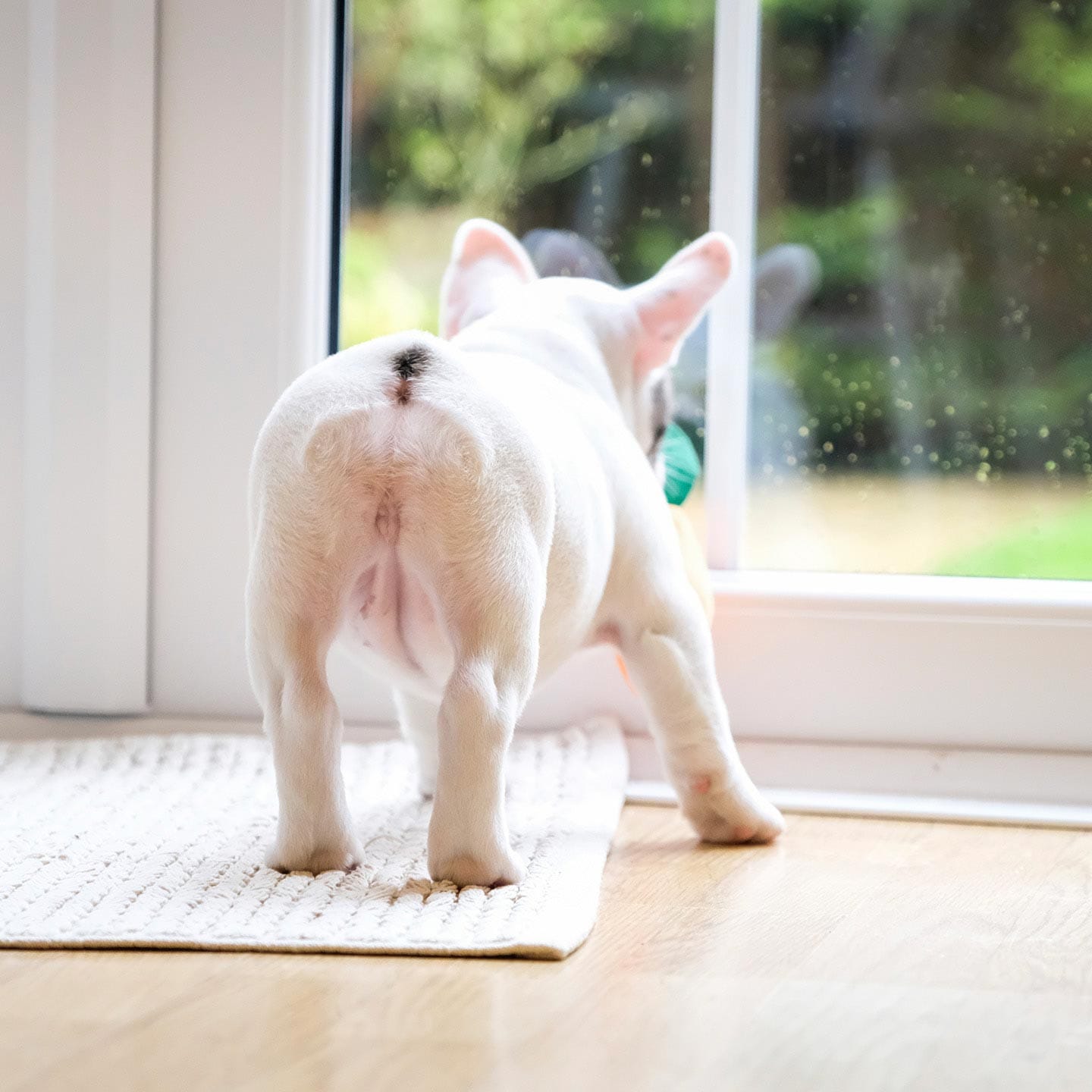
iStock.com/gollykim
1Calculate your puppy’s “hold time.”
Puppies have limited bladder capacity, which means that they’re only physically capable of holding their waste for a short time. You can figure out your pup’s basic “hold time” by translating your pup’s age in months into hours, which means a 2-month-old puppy typically has about two hours of hold time. These short timeframes mean that your new puppy needs many opportunities to use the bathroom throughout the day.
2Get your pup used to their crate.
Give your dog ample opportunity to get used to being inside of their new crate, so they don’t think of it as a punishment. To help them learn to love their doggy den, leave the door open and throw treats inside for them to fetch, or give them their treat-dispensing toy to enjoy while inside. A crate is an important housetraining tool, but remember that crating a puppy—or any dog—for too long is cruel. Try to limit their confinement to only their hold time during the day.
3Use pet gates to help you supervise.
Protect that white faux-fur rug! Gates set up throughout your home prevent your pup from sneaking off and relieving themselves in a different room or carpeted areas. They’re especially helpful in letting you supervise a dog between potty breaks and while working from home.
4Map out a consistent daily schedule.
Puppies generally need to go out:
- First thing in the morning
- After meals
- After play and training (and sometimes in the middle of it!)
- After waking up from a nap
- Before going into the crate at any time of day
- After coming out of the crate
- Before bedtime
Design a consistent daily schedule that has time for each of these potty breaks, as well as your pup’s meals and play time. It can be tough to keep track of your pup’s busy schedule while simultaneously keeping track of your own mile-long to-do list, so it helps to keep a written record of when you take your puppy out (and what actually comes out while you’re there!).
Download our Puppy Potty Training Chart to help you keep track.
5Use a long-term confinement area when you leave for the day.
Pet parents who are away working for several hours of the day should set their puppy up in a gated space that has a spot for hanging out, as well as a designated bathroom. Think of it more as a one-bedroom apartment as opposed to a studio. (Hello, upgrade!)
To create your pup’s long-term confinement area, set up an exercise pen, place their crate inside with the door open, and a pan or tray with an artificial “potty lawn.” And don’t forget to toss in a busy toy to keep your puppy happily occupied while they’re in there.
You can leave your pup in this space when you have to be away from home longer than they’re capable of holding their waste, or if you need to work from home uninterrupted for a few hours. But don’t forget that it’s still important for young puppies to have at least one real walk while you’re at work. If you’re working outside the home, the best option for potty training is to have someone stop by to let your puppy out multiple times throughout the day (if you can do so safely). Consider either hiring a dog-walking service or asking a friend or family member to help out. Leaving a new puppy alone in the house for a full eight-hour workday can lead to issues like separation anxiety and delay the potty-training process.
6Learn to read potty language.
You always wanted to learn a new language, right? If you’re properly supervising your puppy, you’ll be able to recognize your puppy’s pre-potty body language. Every puppy has a series of behaviors that can clue pet parents in on their need to go outside. Sure, sniffing and circling are indicators—but by the time your puppy is doing that, it might be too late to get outside in time! Learning early predictors of the need to potty, such as distractedness, walking away from you or trying to hide behind furniture, will help you get your pup out in time.
7Don't forget the treats!
Load up your pockets with goodies every time you head outside for a potty trip with your pup. Rewarding your dog with a small goody right after they finish teaches them that that they “get paid” when they eliminate outside. Cha-ching!
8Teach your puppy a potty phrase.
You can encourage your pup to go to the bathroom quicker by using a consistent potty phrase like “hurry up” or “go potty.” (This is especially helpful during inclement weather!) Calmly say the phrase right as your puppy goes, then—cha-ching!—follow up with a small treat and lots of praise. In time, the phrase will tell your pup what to do when outside.
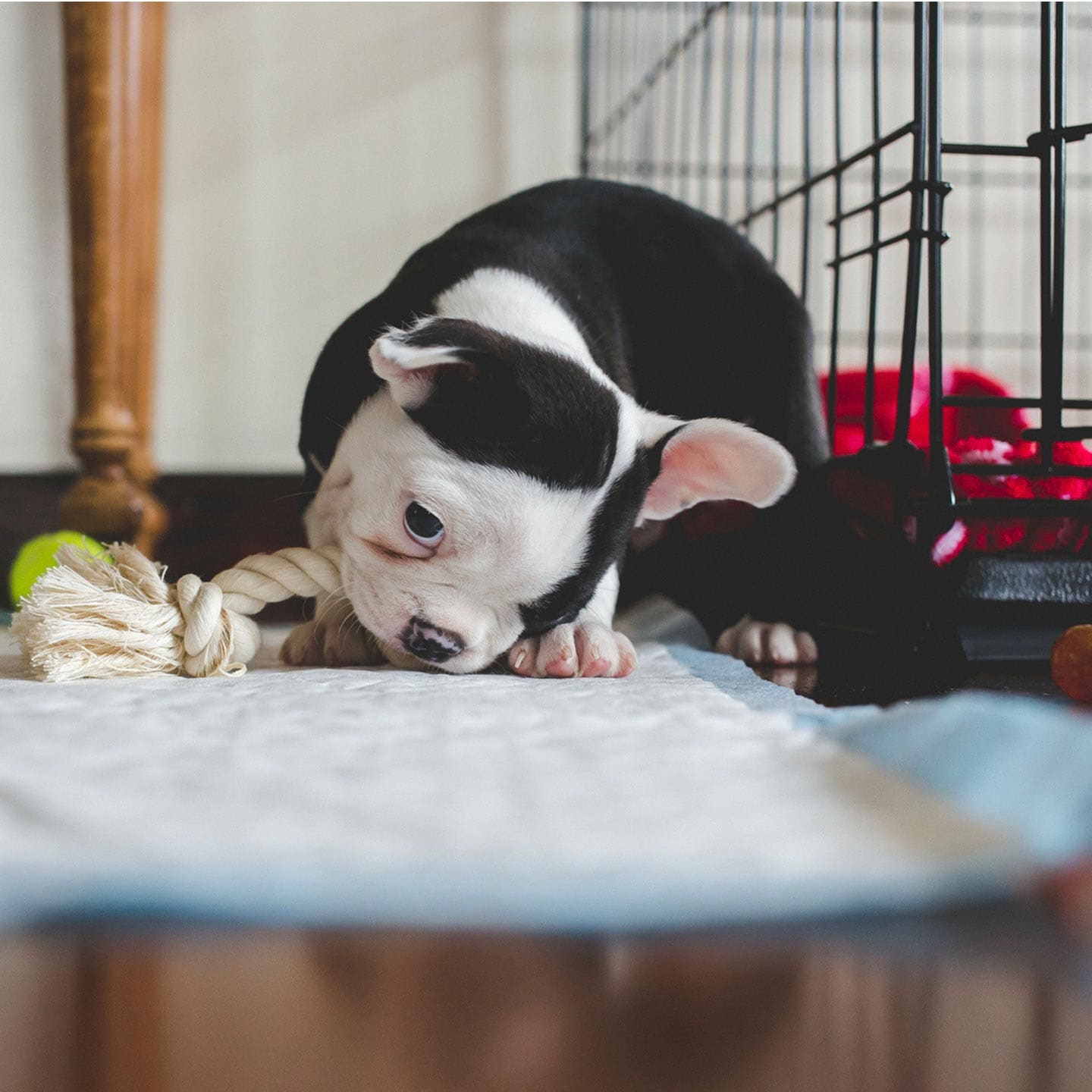
Stocksy.com/Danny Pellissier
A Few Tips on How to Potty Train a Puppy in an Apartment
Apartment dwellers, especially those on higher floors, might find it slightly more challenging to get their pups outside in a timely fashion. Using the potty tray can really help for those moments when your puppy gets “surprised” by the need to go (for example, if you’re playing and it triggers the need to urinate). If you have a patio available, you can keep the potty spot outside when you’re home to mimic the “pottying outside” sensation.
It also helps to carry your puppy down the hall and in the elevator until you reach the sidewalk to prevent accidental slip-ups. It’s a great way to make your landlord and neighbors not hate you.
So Wait, How Long Does It Take to Potty Train a Puppy?
There is no easy guideline as to how quickly you can potty train your new puppy since so much of it depends on you. The better you commit to nonstop supervision when you’re at home, proper crating protocols and adequate potty opportunities to go to the bathroom while you’re at work, the faster your pup will get the hang of it. A handy way to tell if you’re getting close is a completely accident-free month. Once you hit that milestone, your puppy is well on their way to potty mastery!
You've Got This!
Sure, figuring out how to potty train a puppy while working a full-time job—whether at home or away—can seem daunting. But with patience, the right tools and proper planning, you and your pup can—and will!—succeed. Way to go, potty-training pros!
More Tips for Puppy Parents
Share:




